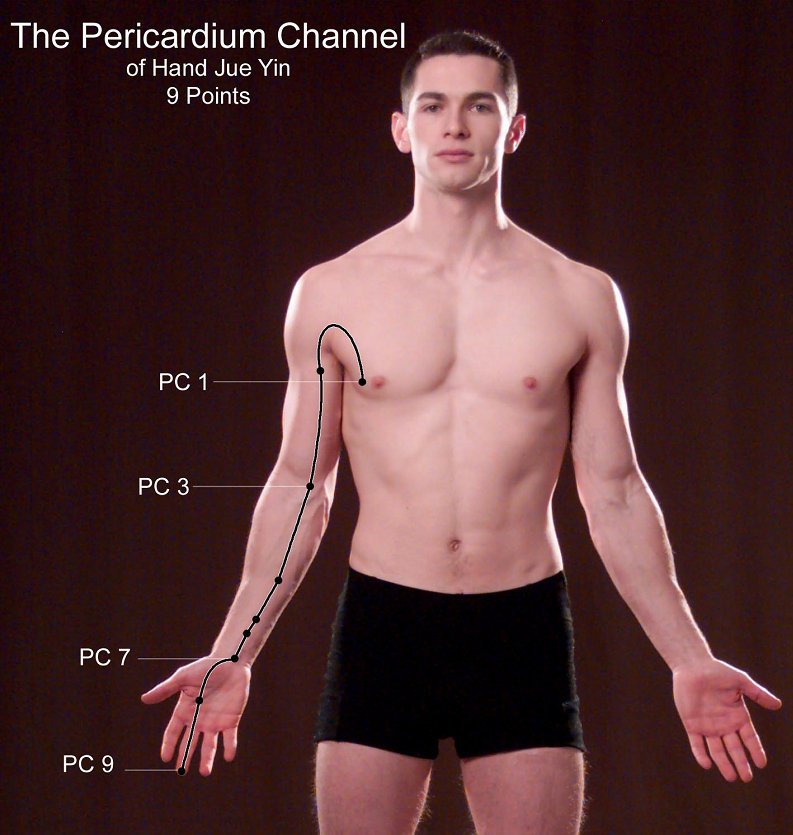
Treating the Root Cause with Acupuncture: the Emotion Under the Ailment
It’s common within any medical system to focus on physical issues. The same is true for acupuncture and Chinese medicine. Pain is perhaps the most common ailment treated by acupuncture. However the more ancient a medical system, the more latitude for the treatment of mental and even spiritual concerns.
We must ask the question: where does pain come from? Why does it exist? What is its purpose? Quite often the cause is unclear. This is when acupuncture and other “energy-based” therapies excel.
The cause of any illness is complex, often comprising stagnations of energy, blood and fluids as well as underlying deficiencies and weaknesses. These phenomenon can be occurring within the physical body, but commonly they are also occurring on the mental-emotional, even “spiritual” levels of the body.
There are many healers who believe every physical ailment has a mental-emotional component to it. Caroline Myss and Louise Hay have sold millions of books presenting this theory.
Like Myss, I tend to view health and illness as a type of “hero’s journey.” The body is our ally in spiritual development and wisdom cultivation. It is there to guide and teach us. The problem however is that most of us don’t know how to work with the body or understand its messages. Most of us end up ignoring or blatantly defying the body’s messages, leading to more problems.
Acupuncture is a bridge between the physical and energetic. It works on the physical body to address energetic imbalances: stagnations and deficiencies leading to physical problems. Its ability to address energy imbalances also allows acupuncture to reach into the mental, emotional and spiritual aspects of the self.
Yet I think the greatest gift from an ancient system like Chinese medicine comes through seeing connection between the physical and non-physical: the way conditions can concurrently exist within the physical and mental-emotional bodies. 2000 years of history, development and practice can also provide insight into the potential spiritual lessons or cultivations involved in many diseases and ailments.
When I speak of spirit, I’m not inferring judgement. In the purest sense, spirit has no judgement. Chinese medicine is not inherently a judgmental system of medicine. For example, issues involving the Kidney-Bladder system of the body which can include low back pain can be seen as potentially involving issues such as fear or dysfunction of the willpower. This can come about from depletion of internal energy or stagnation from trauma. There’s always a reason. Maybe one’s lifestyle or belief systems are causing this. Or maybe there’s an unresolved emotional experience trapped in the area.
If treating just the muscle tension in the low back completely resolves the pain, then that’s enough. Maybe there was just some environmental cold or damp in the region that needed to be cleared. But the body might need more attention than that. If so, we need to peel the layers.
As an acupuncturist I obviously see many people for physical ailments such as pain. I also commonly treat physiological issues with digestive, gynecological, respiratory, immune aspects. Yet, since I began practice 15 years ago I’ve always attracted patients interested in addressing the more subtle aspects of their lives: happiness, feeling states, the ability to manifest their desires or let go of heaviness that seems to hold them back in life.
I often use physical symptoms to guide me into where a person’s stagnations and deficiencies live. This helps me determine where they are being blocked or why certain feeling states (physical or non-physical) exist and persist.
It’s easy to classify non-physical complaints as “anxiety and depression.” The ancient Chinese medical classics even did this, labeling the most common mental-emotional disorder Dian Kuang or “withdrawal and mania.”
However, there is a specificity and subtly that can be applied to the treatment of a person’s mental, emotional and spiritual self. Chinese medicine has spent thousands of years finding associations between the internal organs (with their associated acupuncture channels) and the spiritual and mental aspects of our being.
A major chapter in the medical classic links mental-emotional states with physical symptoms, creating a basis for psychosomatics from which I constantly draw.
Sometimes back pain is just that; but sometimes it is much more. Acupuncture as a medical system that bridges the physical and energetic is able to make the leap when necessary.
The way that I treat, based on the way I was taught, always takes a person’s spirit and mental-emotional state into account, no matter what I am treating.
My two major acupuncture teachers were a Buddhist who treated the Dalai Lama and a Taoist priest. So I was obviously highly influenced by them. In fact, acupuncture itself is deeply rooted in spiritual healing. The core textbook for acupuncture, dating back to the Han Dynasty (200 BCE), is named Ling Shu: the spiritual compass. One of the most famous chapters in the Ling Shu teaches that every acupuncture treatment must be “rooted in spirit” to be fully effective.
In classical Chinese medical thinking, each of the internal organs “houses” an aspect of the spirit. Therefore each organ possesses certain themes that can be treated through their acupuncture channels. It is acknowledged that the spirit of willpower is housed in the region of the lower back. It is also recognized that the emotional attribute fear is associated with the Kidneys and can also manifest itself in the lower back: the realm of the Kidneys.
Every acupuncture point has a “spirit.” They possess actions that affect physiological function, but they also contain an aspect of the spiritual nature of life: its lessons and cultivation wisdom.
An acupuncture channel, connected to its internal organ sets the overall theme. The acupuncture points are the details and variations of the theme.
The clearest example of this is through the acupuncture channels for the Heart and Pericardium: representations of the inner and outer expression of the Heart, which “houses” the Shen – a person’s overall spiritual animation. Within basic circulatory treatment strategy, the Heart’s acupuncture channel is said to treat peripheral circulation, while the Pericardium treats systemic circulation. This is true on both a physical and well as non-physical level.
Yet with everything Chinese medicine, there is a seemingly mysterious “Yin-Yang” balancing. The Heart’s acupuncture channel is seen as more “superficial” than the Pericardium. Yet the organ of the Heart is much deeper than the Pericardium, which is really just an energetic entity. This shows the special spiritual design of this system.
The Shen, or great spirit is “housed” in the Heart, and flows through the blood. But we know the spirit is mysterious: it has no form, yet it is the source of all form. Everything comes from spirit. Without spirit there is no life. Therefore the acupuncture channel that manifests from a highly spiritual organ like the Heart must also be mysterious – showing itself in action, like blood circulation. The spirit is light and nonmaterial. It cannot be contained or quantified. We see its manifestations, yet not its form. Yet through it form is created. The Pericardium is like this, said to be a channel with function but without form. Mysterious yet highly potent and active.
The ideal state of the Heart is said to be “empty.” This is something both the Buddhists and Taoists say. The Heart’s spirit is all-embracing. Problems only arise when the Heart “fills.” Then the spirit becomes weighed down. This can also be a description of the Pericardium and the internal circulation. The Pericardium is often used to treat that which has entered the Heart to block or disturb the spirit. Classically it was the Pericardium that was treated for Heart and spirit problems: to work out that which the Heart cannot let go or embrace, usually in the form of blood or phlegm stagnation.
My teacher used to say each acupuncture channel is a story: an ode, or “song.” They are not only channels to regulate body physiology; they are also channels for cultivation and spiritual development.
The Pericardium is often translated as the “heart regulator.” It’s effect includes the equivalent of the greater circulatory system. It is also seen as a “heart protector”: the aspect of the heart that absorbs the pains of life. The Pericardium can often act like a shield or armor constructed due to trauma, manifesting the various physical and non-physical “heart pains.” It is that which holds onto unresolved traumas, which can weight heavy on the spirit.
The acupuncture points on the Pericardium therefore resonate with the pains of life: heart break, trauma, disillusionment, armoring, the “closed heart.” They all have an impact on the spirit, mind and emotions. They are amongst the most calming points on the body, having a strong effect on treatment of anxiety and depression. They are also cathartic points for redemption and forgiveness and moving on, a function called “rectification” in Chinese medicine.
The “source” point of the Pericardium channel is called Da Ling: the Great Mound (PC-7), representing a type of burial mound. PC-7 resonates with a powerful acupuncture point on the chest called Ling Xu: “the spirit burial ground” (KI-24) which is often used to “resurrect a person’s spirit” when they are feeling hopeless and depressed. KI-24 is often used for serious cases of spiritual crisis: the “dark night of the soul.”
PC-7 treats agitation (“blood heat”) that comes from something unresolved, buried in the chest. It gives the image of what’s known as the “hidden corpse”: something that continues to haunt a person, disturbing the spirit and mind. This point also has a strong effect on treating digestive symptoms that come from emotional problems.
Blood stagnation is described emotionally as something a person is aware they are holding onto. They know what the trauma is, if not how to let it go. Phlegm stagnation is often more mysterious: it is a feeling of dis-ease yet without a storyline. The Pericardium channel treats both types of stagnations. From these stagnations, heat and wind can develop. Heat causes agitation and anxiety, as well as inflammatory symptoms. Wind can manifest neurologically or as chaotic emotions, angry outbursts, dramatically shifting emotions or moods.
The point Nei Guan: “inner passage” (PC-6) is the most popular point on the Pericardium channel due to its strong ability to open the chest, treat pain and tightness, calm the spirit, and ease digestive symptoms especially when there is upsurging energy like nausea or acid reflux. Spiritually this point treats a “closed heart.” It helps open the passage into the heart so that which has been trapped inside creating heat and agitation can begin to come out for release and redemption.
The chest is the home of the Heart and Lungs: the organs responsible for blood circulation. The chest is also a region that has to be “unbound” and opened for the release of stagnant phlegm that may be “clouding” the mind and spirit. Therefore all of the points on the Pericardium channel regulate and open the chest, with PC-7 and PC-6 being the strongest.
The effect of opening the chest is to promote a state of “surrender.” A heart that is “full” must be emptied of its burden to let go of the hauntings, disappointments and stories clouding the spirit and putting it in bondage.
Redemption of the spirit is the major theme of the Pericardium channel. It is often combined with either the Spleen or Liver channels, all of which also “rectify the qi,” meaning they help a person find a sense of forgiveness and acceptance.
The Spleen relates to a person’s thinking process: the ability to reflect and process experience. The Spleen transforms phlegm: confusion or unclear, obsessive thought.
The Liver deals with time and its emotional aftermath. The Liver is responsible for “storing the blood” (experience), but also for maintaining the “smooth flow” of the body’s energy so life can constantly move forward. Like the Lungs, the Liver circulates qi to move the blood (emotions and experience), especially when it is stagnant.
Trauma for example keeps a person stuck in time. It can cause excessive rumination on the past. It can also create heat agitation that can scatter a person’s spirit, keeping them excessively focused on the future. Either extremity causes a person to live out of the moment, unable to be present. They are either always living in the past or worrying about the future: scattered or stuck. Either way, it becomes a painful way to live.
Perhaps the most dramatic name to the Pericardium points is located on the palm of the hand: Lao Gong: “the palace of toil” (PC-8). This is a point used for extreme situations: “Heart Fire” and “Internal Wind” which can create body tremors, convulsions, psychosis, extreme anxiety, mania and acting out behavior. This point also calms digestive symptoms due to emotional upset. Yet it is the name of this point that represents major suffering. This point treats a type of obsession where a person keeps engaging in something that is draining them of energy. It might be an addiction or a toxic relationship or even a job. It is something they put much effort into which doesn’t pay off or work out, leaving them drained and unstable.
The highest points on the Pericardium channel both have the name “Celestial” in them: Tian Chi: “celestial pond” (PC-1) and Tian Quan: “celestial spring” (PC-2). They are both points that “rectify the qi,” acting like a blessing from “heaven” or the “divine” to allow a person to forgive themselves so they can reconnect to a sense of the divine within themselves to resume expression of their divine nature. The pond gives the image of a gathering of “Celestial” or divine energy which is both cooling and nourishing. A pond can also act like a mirror where we can gaze to see ourselves, but through a “divine” or “spiritual” mirror. A spring is a water source that feeds a river. This point restores the spiritual nourishment for the acupuncture channels which represent our life: a spring of spiritual energy.
Many of us may feel a sense of barrenness in our lives, as if the spring that feeds our spirit has dried up. This may manifest in feelings of impoverishment emotionally, financially, socially, creatively. PC-2 draws from the pond, the source, to reinstate the “spring” that feeds the rivers of our life: the circulatory flow of spirit as it manifests in feeling and form.
It’s easy for a person to feel tainted or stained by events that happen in their lives. They may feel unworthy or not good enough; unlovable, distrustful or bitter. The “Tian” points on the Pericardium channel “open the chest” to allow a sense of surrender. Or as they’d say in recovery programs: “give it to God,” let it off your chest. This allows a sense of redemption. These points are named after water sources for a reason: they are able to wash off a sense of being stained, and restore flow when a river has gone dry or a pool has become barren.
The final point on the Pericardium Channel sets the purpose for the entirety of the channel: Zhong Chong: “the center of the Chong vessel” or I like to call it “the center of destiny” (PC-9).
The Chong Vessel is considered the blueprint of the body. It is a very deep channel: our energetic center. It’s sometimes called “the thrusting vessel,” providing the “thrust” of our lives.
The entire Pericardium channel is about redemption of the spirit. The Pericardium is considered the intermediary between the Kidneys which hold onto the essential nature of a person – destiny, and the Heart which houses the “spirit animation.” The connection between the two could be said to be the relationship between who we are and what we do. This is what the Chong vessel manages: the relationship between our essential selves and our spirit expression. But beyond that it is also about having the willpower and excitement to live our lives and express ourselves.
Many people complain that they feel they’ve gone “off their path,” feeling lost or disoriented. The “Center of Chong” is a point that tries to return a person to a sense of being connected to their spiritual path. Or give insight into ways in which their life does or doesn’t reflect who they essentially are.
The redemption process, which involves self-forgiveness and digestion of lessons learned in life through experience is key to bringing a person back to the “center thrust” of their life path. This is what the Pericardium aims to do: help a person back onto their path when they feel they’ve become alienated or diverted from it.
The Pericardium channel can act like a spiritual healing. It can “return” the spirit when it feels it has scattered, release the “hidden ghosts,” clean the “stains,” and restore a sense of spiritual connection to feel the divine in ourselves once again.
The Pericardium and Heart, representing the spiritual animation is just one of the ways in which acupuncture can work with spiritual issues. Each of the organs and their channels has a hand in the spiritual self. Like the Heart, the possibilities are endless.





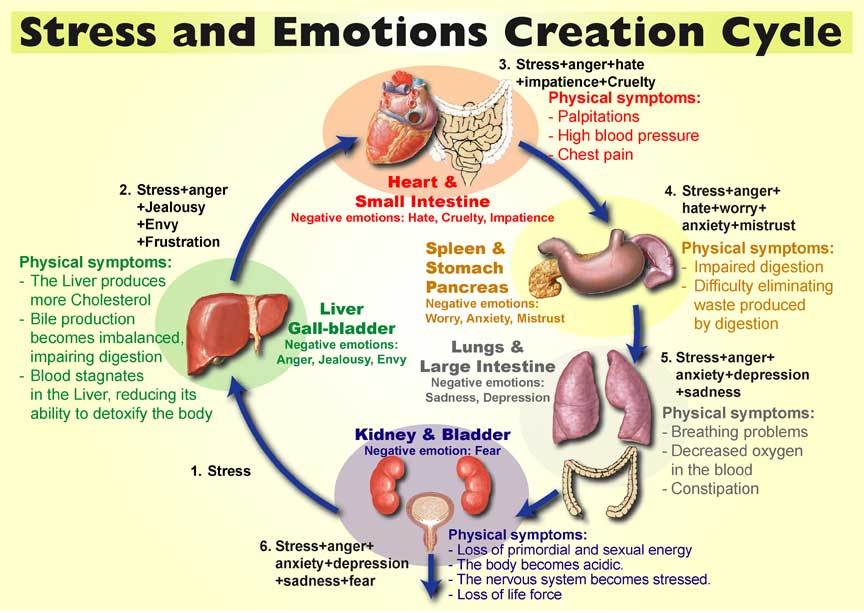
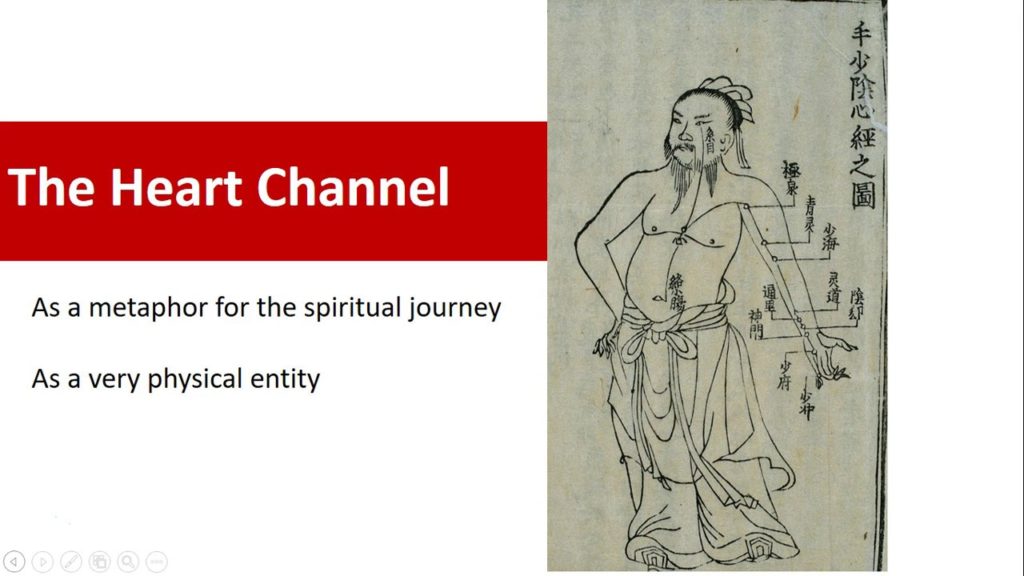
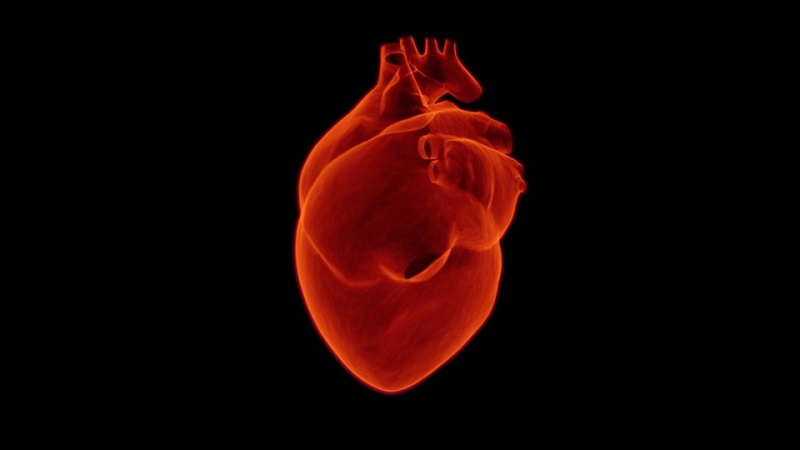
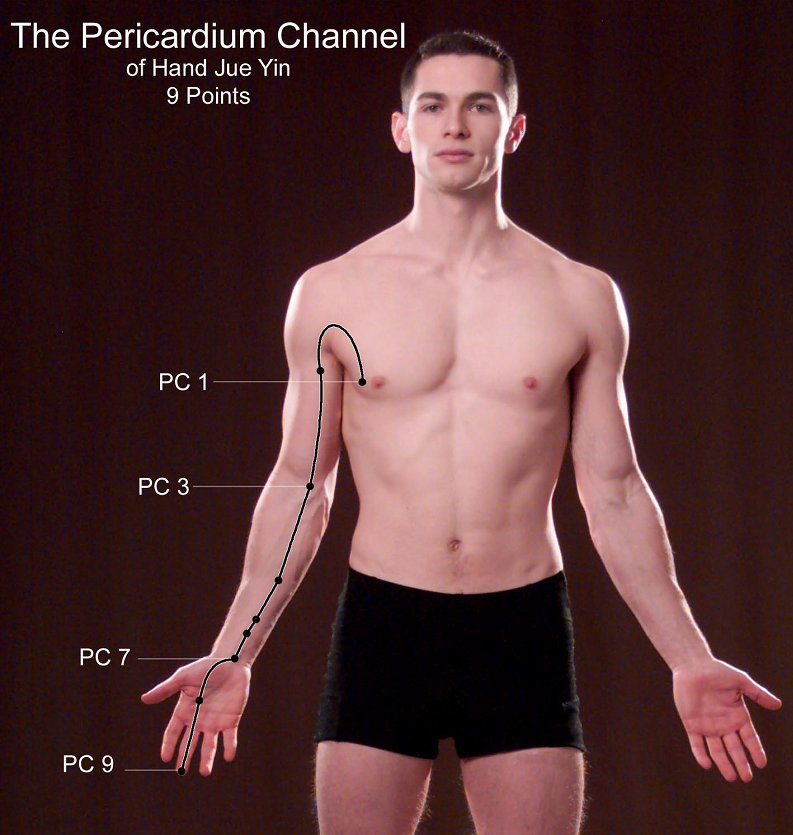
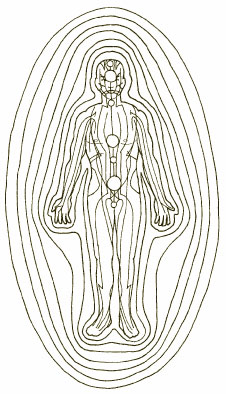
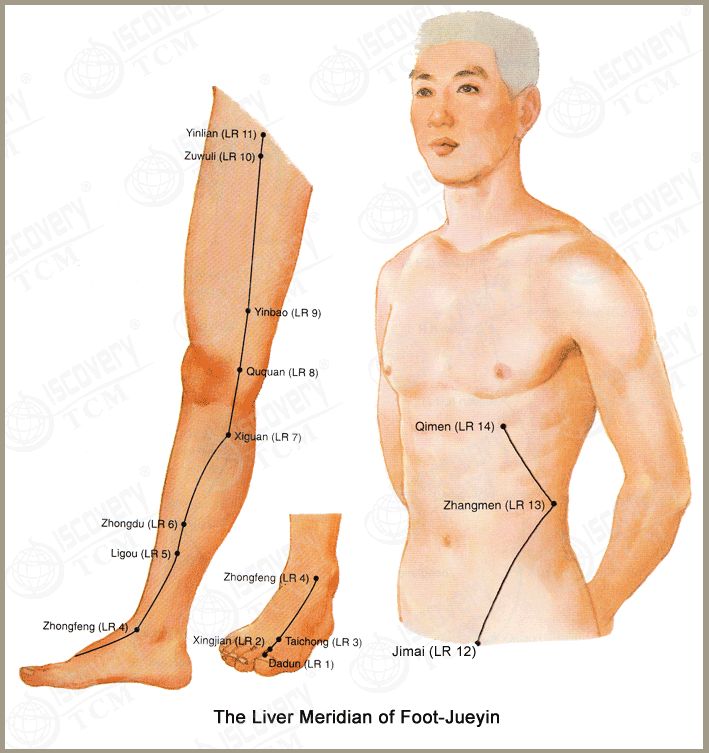





No Comments